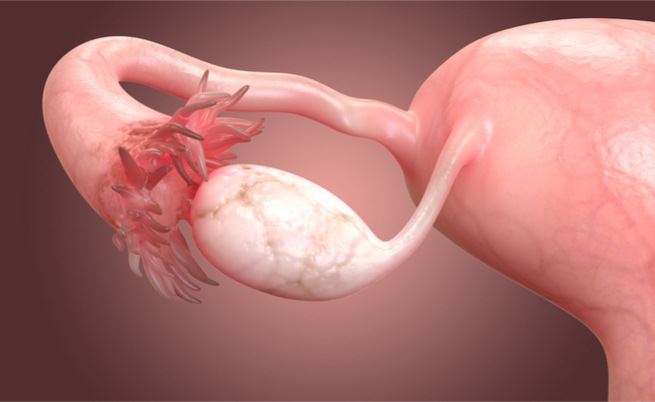
Polycystic ovary syndrome: signs, symptoms and treatment
Polycystic ovary syndrome (PCOS) is the most common endocrine disorder of the reproductive age. It is a fairly common condition that affects 5-10% of women of childbearing age and can adversely affect metabolism and reproductive capacity
How does it manifest itself and what are the treatments?
What is polycystic ovary syndrome?
Polycystic ovary syndrome occurs when at least two of the following characteristics are present
- menstrual irregularities with absence of the menstrual cycle, very short or very long cycles with consequent ovulatory dysfunctions, thus affecting the woman’s fertility
- signs of hyperandrogenism (increased male hormones) manifested by hirsutism (increased hair on the face and body, especially in certain areas), acne and alopecia (reduced quality and quantity of hair). Hyperandrogenism is also responsible for a lack of follicular maturation, resulting in an absence of ovulation and an increased risk of metabolic syndrome;
- polycystic ovaries on ultrasound, i.e. ovaries that are larger than normal in size and contain a large number of small follicles.
Polycystic ovary syndrome is often associated with hyperinsulinemia, which causes insulin resistance
The most frequent manifestation of insulin resistance is difficulty in losing weight, which contributes to a further increase in androgen production, aggravating the clinical picture.
Not all PCOS patients have the same symptoms, as different combinations are possible.
What are the causes of polycystic ovary syndrome?
The causes of polycystic ovary syndrome are not yet fully known, but it seems to be due to a combination of genetic and environmental factors.
As it is a disorder of the childbearing years, the symptoms of the disease often develop with the onset of the first menstruation (menarche), but it is not uncommon for them to appear in later years.
What consequences can the condition have?
The short-, medium- and long-term consequences are important and include obesity, infertility, diabetes, cardiovascular diseases (hypertension and hypercholesterolemia), depression, obstructive sleep apnoea and an increased risk of endometrial cancer.
Infertility in 40% of cases is due to difficulty in conceiving due to a disovulatory factor and an increased incidence of obstetrical problems (such as miscarriage, gestational diabetes, fetal macrosomia, pre-eclampsia, congenital anomalies).
Gynaecological examination for the diagnosis of polycystic ovaries
Polycystic ovary syndrome is diagnosed by a gynaecologist when there is a suspicion of hyperandrogenism or ovulatory dysfunction associated with an ultrasound picture of a polycystic ovary and only after other causes of hyperandrogenism have been ruled out.
During the gynaecological examination, in fact, the specialist will be able to gather information on the menstrual cycle, the patient’s physical characteristics, any family pathologies and, by means of transvaginal ultrasound, confirm the presence or absence of polycystic ovaries.
If necessary, to complete the diagnostic picture, a blood sample will also be taken to assess the hormonal balance, the lipid and glycaemic profile, thyroid function and vitamin D.
How is polycystic ovary syndrome treated?
Polycystic ovary syndrome is treated differently depending on its manifestations.
In order to limit the signs of hyperandrogenism, taking the oestrogen-progestin pill (contraceptive pill) can be useful, while for patients with menstrual cycle abnormalities who are seeking a pregnancy, attempts are made to induce ovulation with various therapeutic approaches depending on the clinical picture, age and duration of the period of seeking pregnancy (weight loss, physical activity, lifestyle changes, clomiphene citrate, metformin, inositol, gonadotropins or IVF).
In any case, adopting a correct lifestyle: a healthy, balanced diet, weight loss (if the patient is overweight) and regular physical activity are essential to help prevent the more serious consequences of this syndrome.


